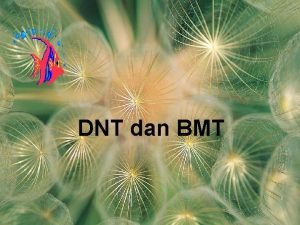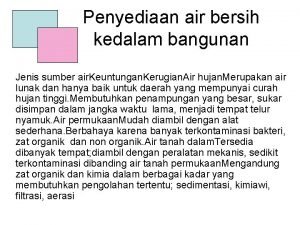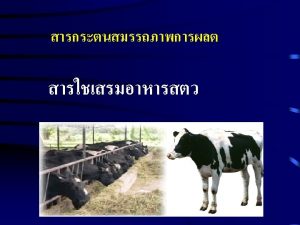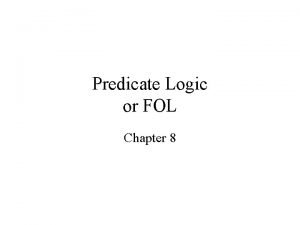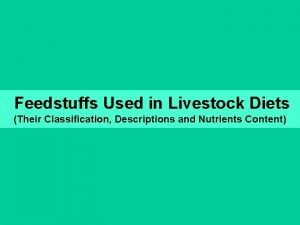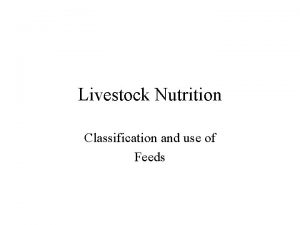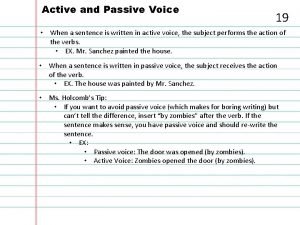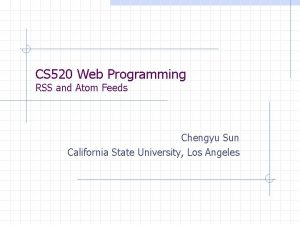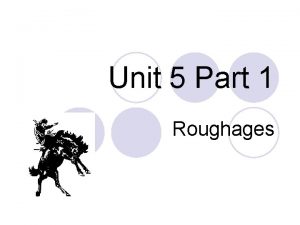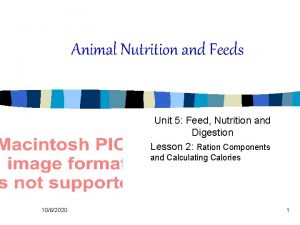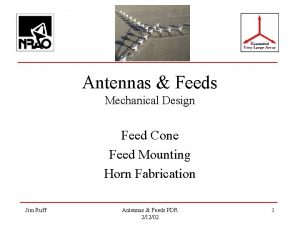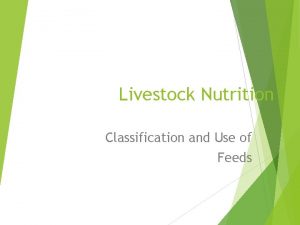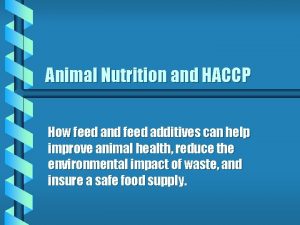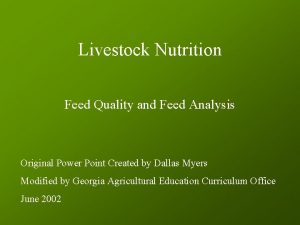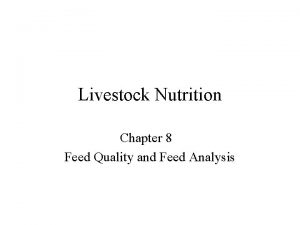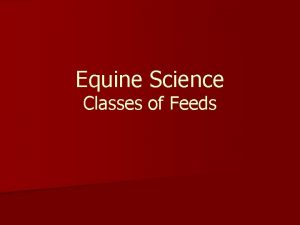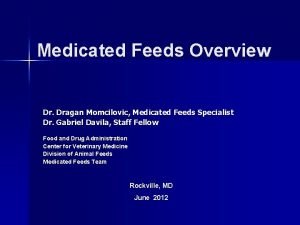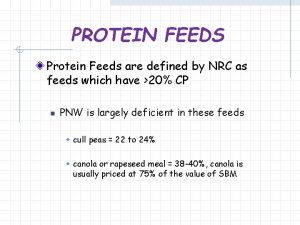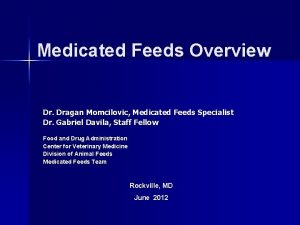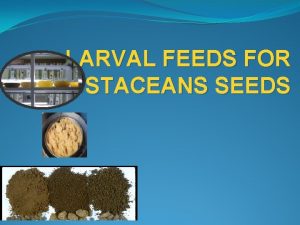Roughages and Concentrates Feeds and Nutrition FEED CLASSIFICATIONS














- Slides: 14

Roughages and Concentrates Feeds and Nutrition

FEED CLASSIFICATIONS 1. Roughages 2. Concentrates 3. Supplements

ROUGHAGES • High in Fiber and relatively low in digestible nutrients Examples of roughages: 1. Alfalfa 2. Clover 3. Soybean 4. Oat hay 5. Corn Silage

ROUGHAGES • The amount of roughage required will depend upon the kind of digestive system and the products to be produced by the animal • Generally the most economical portion of a ration • Some animals can produce a marketable product utilizing roughages alone, while others must receive additional nutrients in the form of concentrates

ROUGHAGES • Crude fiber is the hard-to-digest part of the feed. Also known as insoluble fiber, and aids in bowel movements

ROUGHAGES • Two classes of roughages – Legume roughages • A legume is a plant that can take nitrogen from the air. They have nodules (small swellings or lumps) on the roots that contain the bacteria known as rhizobia that can make the nitrogen available for the plant to use • All clovers, alfalfa, soybean, peanut, lespedeza, and all beans and peas

ROUGHAGES • Two classes of roughages – Non legume roughage • These come from plants that cannot use the nitrogen from the air. They are lower in protein and calcium then the legume roughages • Timothy, oat, brome, Bermuda, wheatgrass, corn silage, sorghum silage, fescue

CONCENTRATES • Are low in fiber and high in digestible nutrients Examples of concentrates: 1. Corn 2. Cottonseed 3. Barley 4. Oats 5. Sorghum

CONCENTRATES • There also many kinds of concentrates • Some are high energy- high protein concentrates, and others are low energy- low protein concentrates • A concentrate is intended to be diluted and mixed with other feedstuffs to produce a supplement for a complete ration • However, in feeding practice a concentrate is usually described as a feed or a feed mixture which supplies primary nutrients (protein, carbohydrate and fat) and contains less than 18% crude fiber

CONCENTRATES • Two classes of concentrates 1. Protein supplements 2. Energy feeds

Protein supplements • Protein Supplements- contain 20% or more protein • A supplement is a feed or feed mixture high in one or more of the basic nutrient groups • Used with another feed to improve the nutritive balance or to supply additional nutrients lacking in the ration • Animal Proteins- meat scraps, meat and bone meal, dried milk, blood meal, and tankage (animal tissues and bones from slaughterhouses that are cooked, dried, and ground) • Vegetable Proteins- soybean oil meal, cottonseed meal, linseed oil meal, peanut oil meal.

Energy Feeds • Feeds that contain less than 20% crude protein. Most grains fall into this category • Corn, oats, barley, rye, wheat bran, dried beet pulp. The most commonly used ones are corn, sorghum grain, oats, and barley.

Supplements • Supplements are extras that supply the body with additional nutrients. • Some of the supplements are minerals salt, copper, iodine and iron • Vitamin A and D are also very important to ruminant animals Salt Copper Iron

Review…. 1. What is nutrition? Nutrition is the science of dealing with the utilization of Food by the body processes which transform food into body Tissue and activities. 2. Why is nutrition important? The utilization of unusable feed stuffs and convert them to desirable products such as meat, milk and eggs. 3. What are the six nutrients needed? Protein, carbohydrates, fats, minerals, vitamins and water
 Dry roughages examples
Dry roughages examples Feed up feedback
Feed up feedback Feed up feed back feed forward
Feed up feed back feed forward Perbedaan feed additive dan feed supplement
Perbedaan feed additive dan feed supplement Sistem down feed
Sistem down feed Feed additive dan feed supplement
Feed additive dan feed supplement Fol
Fol Carbonaceous roughages
Carbonaceous roughages Classification of animal feed
Classification of animal feed Splat figurative language
Splat figurative language Can i have one of your chips figurative language
Can i have one of your chips figurative language Active to passive voice
Active to passive voice Old news figurative language
Old news figurative language Programming rss feeds
Programming rss feeds Biting the hand that feeds you figurative language
Biting the hand that feeds you figurative language



